Have you ever wondered what the best gluten free flour blends are and which recipes these blends work best in? Baking with gluten free flour is like a chemistry project; each blend can behave differently in a recipe. Read on as I demystify how I use the different gluten free flours.
This post may contain affiliate links. Please read our Disclosure Policy.
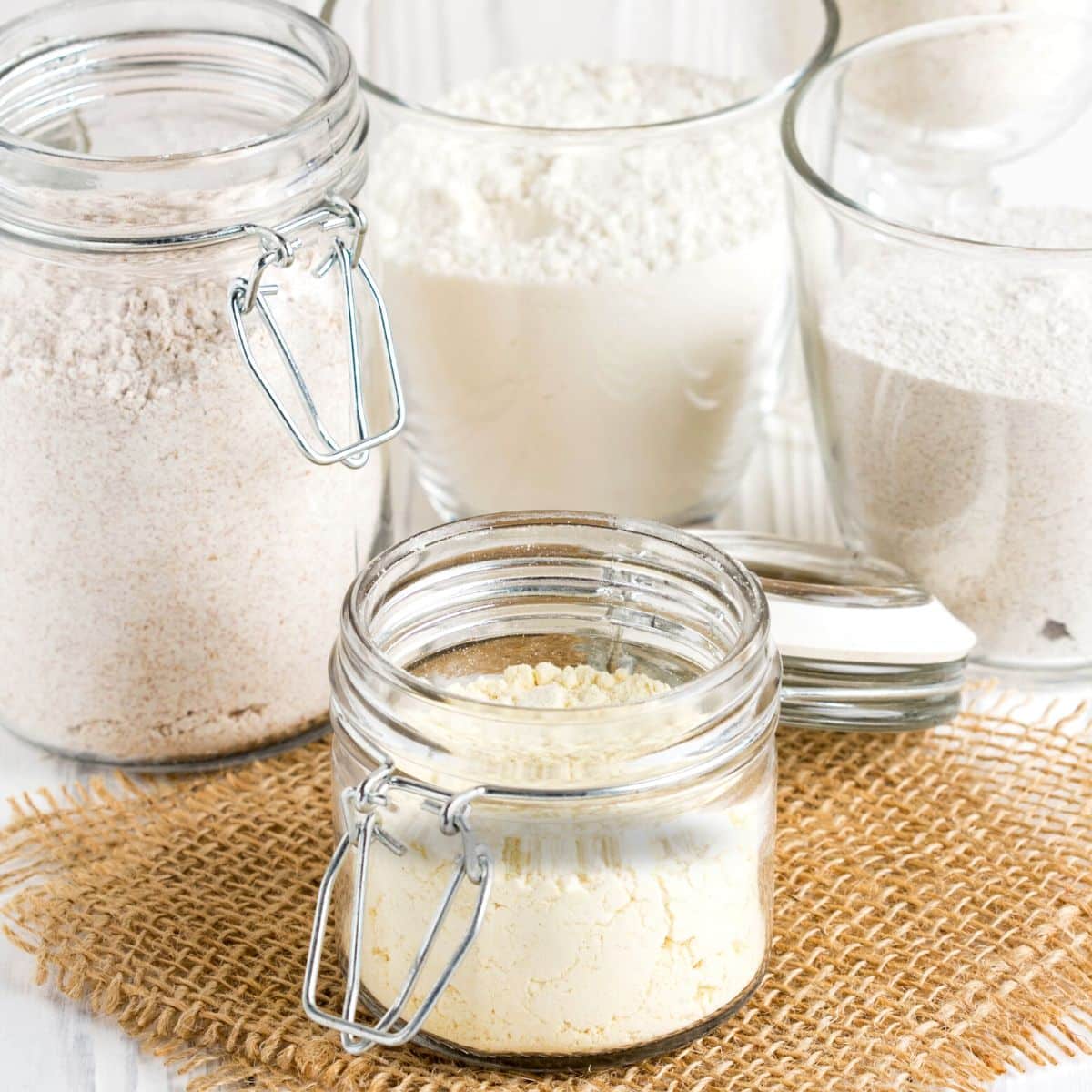
As I write this, I realize there are so many gluten free flours and blends on the market. Each blend varies by grain and starch content ratios, as well as ingredients. Because of this, I will include several flour blends under each category. The blends that I list are blends I have tested. Please know there are probably dozens of blends I haven’t tested due to availability and the country in which the blend is available.
If you have great luck with a gluten free flour that I didn’t mention, please drop a comment below. I would love to learn about more flour blends!
If you are a gluten-free newbie, check out all of my Gluten Free Resources. I also have many pantry recommendations, so you have everything you need for gluten free baking! You may want to read how different gluten free flour blends vary.
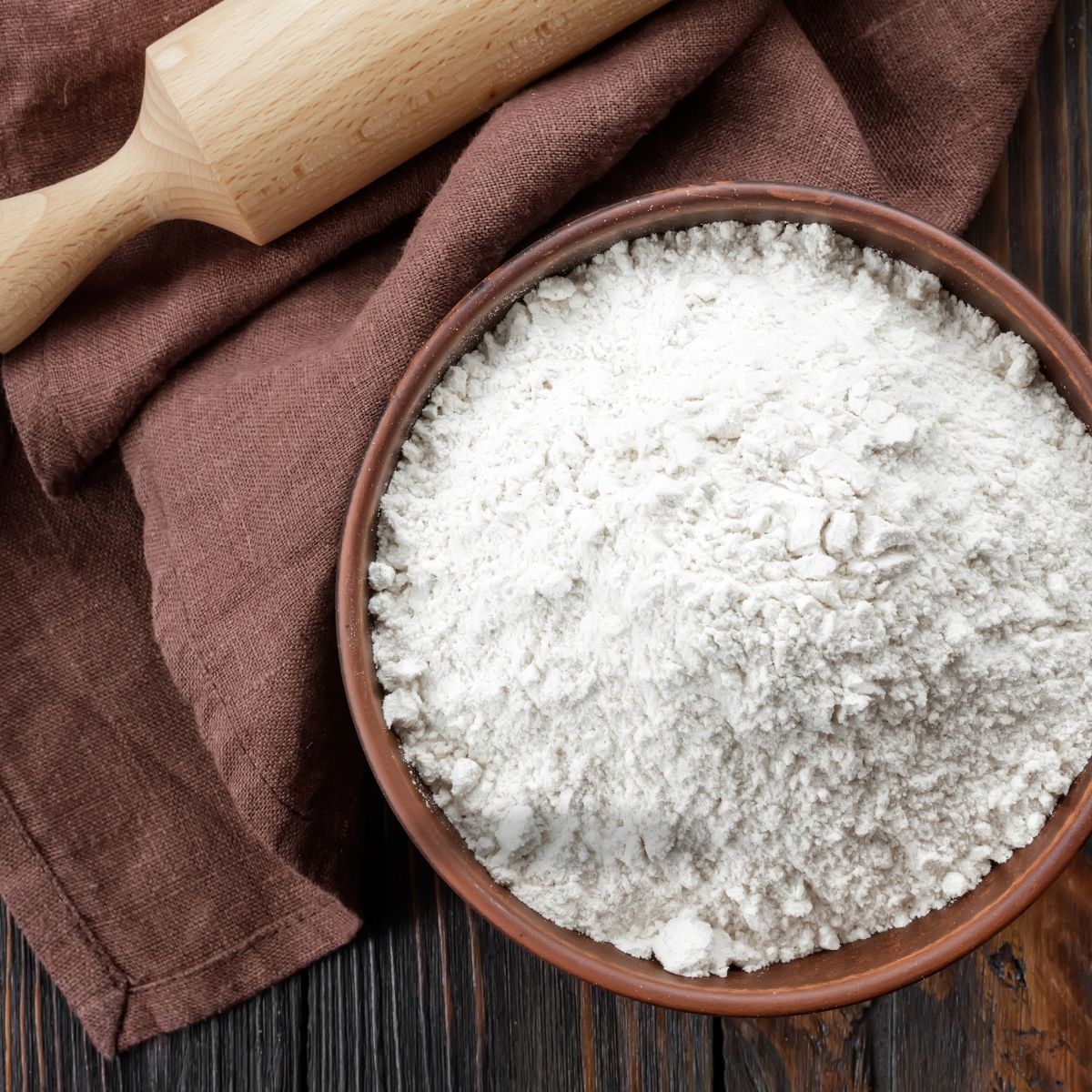
Best Gluten Free Flour For Baking:
It is really hard to state the best gluten-free baking flour. Each flour blend has its strengths and weaknesses. Some blends do not rise well in yeast recipes, while others are better for achieving fluffy cakes.
When choosing what gluten flour to use, it is important to look at the ingredient list. First, ensure the blend has a binder like xanthan gum, guar gum, or psyllium husk. Binders are what will help to hold together your baked goods. Regular wheat flour is sticky and holds together, but gluten free flour doesn’t have this stickiness. This article on Gluten Free Binders explains why it is so important to add it if your blend doesn’t have a binder already included.
Second, what is the grain-to-starch ratio of the blend you want to use? Ingredients on the label are listed from most to least. Is the first ingredient a grain or starch? How much starch is listed? This will affect how much moisture to use in a recipe. If you use a starchy blend in my Gluten Free Sugar Cut Out Cookies recipe, you may need to add more flour, or the cookies will spread!
🔑 Sandi says: One of the most common questions I get from my readers is why a recipe was dry, spread, or didn’t turn out like mine. 99.9% of the time, it is because of the gluten free flour blend the reader used.
If you are new to gluten free baking, read all of my Gluten Free Baking Tips so you are ready to get started!
A quick word on measuring flour. I recommend using either the spoon or the leveling method to measure your gluten-free flour.
- Put the measuring scoop into the flour and fill. Do not pack the flour. Use a knife to scrape along the top to remove the extra flour.
- You can also use a spoon to fill the measuring cup. Use a knife to level along the top to remove the extra flour.
- Many prefer to measure their flour on a kitchen scale. I have found that every blend has a slightly different weight. This is due to gluten-free flour blends’ flour/starch ratio. Because my readers all use different blends, I use either step one or two to measure my flour.
- I compare what 1 cup of several popular gluten free flour blends weigh so you can see the differences.
Baking With Individual Gluten Free Flours
Individual gluten free flour types can be great in baking, but you need to combine them with other flour and starches, plus a binder, for them to work well in a gluten free recipe. I use a custom blend in my Gluten Free Bread Machine Bread recipe. I also have a really easy DIY Gluten Free Flour Blend that works well in many recipes.
🔑 Sandi says: Creating your own flour blend also lets you avoid other allergens you may have. I have a Gluten-Free Sorghum-Free Flour Blend and a Gluten-Free Rice-Free Flour Blend recipe.
- Sorghum Flour – This is a flour I love to use in my blends. It is light but not starchy. It has a very mild flavor and absorbs liquids well.
- Rice Flour – Usually, brown rice flour is used, but some commercial blends include both brown rice flour and white rice flour. If rice flour isn’t milled super finely, it can leave a grittiness to your baked goods. I only use Authentic Foods brand rice flour because this brand mills their rice flour extra fine, which means no grit. Any batter or dough made with rice flour should sit for 20-30 minutes before baking.
- Mochiko (Sweet White Rice Flour) – This natural gluten free flour is the star of my Hawaiian Butter Mochi. It is sweet and light. It is well known for fluffy Mochi Waffles and these Mochi Muffins. I love how inexpensive this flour is.
- Millet – Millet is another gluten free grain that mills nicely for blending with other gluten free grains. I haven’t used it in any recipes, but I am loving it in my Gluten-Free Whole Grain Flour Blend recipe.
- Oat Flour – Oat flour is easy to use in a blend, but it is critical to use gluten free oat flour.
- Buckwheat – Buckwheat is a strongly flavored gluten free flour. It has an almost nutty flavor. It is a nutritious flour, more so than plain rice flour. The name of this grain is misleading because buckwheat is gluten free. I typically blend it with another flour to mellow out the flavor. Try these Gluten Free Buckwheat Pear Pancakes.
- Cassava Flour – Cassava is made from the ground root of the cassava plant. It is popular in the keto and paleo realms. Try it in these Cassava Flour Pancakes.
- Tapioca Starch – Tapioca starch is similar to cassava flour, but fluffier. Tapioca is the starch extracted from the cassava root. It is powdery light and is an excellent addition to gluten free flours. It is a good alternative to cornstarch or potato starch.
- Potato Starch – Potato starch is an inexpensive common starch used in many gluten free flour blends.
- Cornstarch – Cornstarch is also an inexpensive, commonly used starch.
- Binders – Xanthan gum, guar gum, and psyllium husk. These are the glue needed to hold gluten free baked goods together.
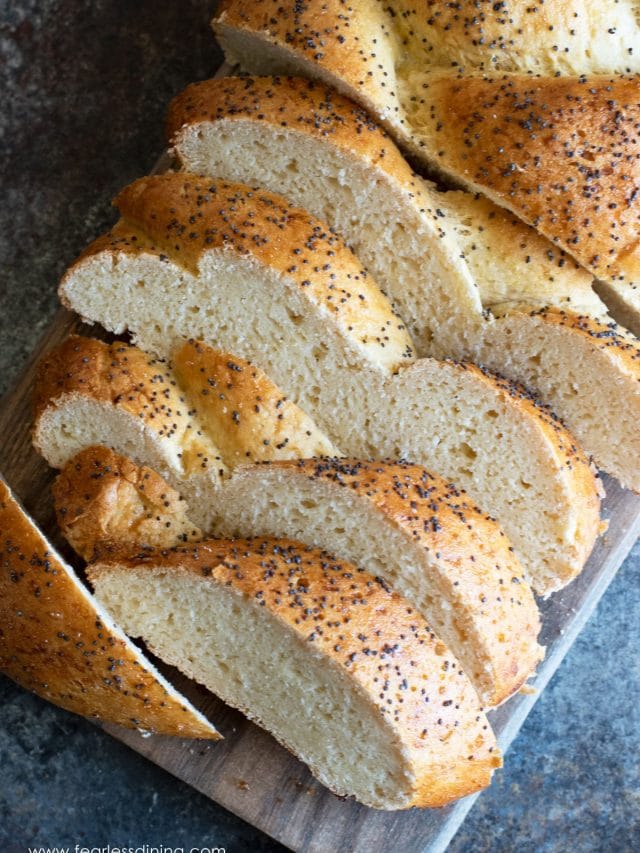
Best Gluten Free Flour For Bread (Yeasted):
- GF Jules
- Better Batter
- Cup4Cup – The old blend version with dried milk powder.
- Authentic Foods Steve’s Gluten Free Bread Blend
- My DIY Gluten-Free Flour Blend, Gluten-Free Rice Flour Blend, Sorghum Flour Blend (all 3 are linked above), and Gluten-Free Whole Grain Blend all work very well in yeast recipes.
My all-time favorite gluten-free bread flour, especially for shaped bread and rolls, is Authentic Foods Steve’s Gluten Free Bread Blend. You can braid it, as I do in my Gluten Free Challah recipe, or roll it as in my Gluten Free Cinnamon Rolls recipe. This flour is life-changing!
My second favorite is Cup4Cup. Note to my dairy-free readers: Cup4Cup has milk powder in the mix. Cup4Cup makes gluten-free flour blends without milk powder, including whole grain. I used their whole-grain blend (green bag) to make these Gluten Free Yeast Rolls. They almost taste like wheat!
Better Batter is another blend that works well in yeast recipes. They make a regular blend and a gum-free blend without xanthan gum. Many swear by this flour, but I find it really expensive. They often have sales on their website, so I recommend waiting for a sale.
Jules GF Flour Blend is also delicious. It is a little starchy compared to the other blends I list, but the bread turns out nicely. I used Jules flour to make this Gluten Free Sourdough Bread loaf.
Yeast Free Bread:
If you are making my Gluten Free Bread Recipe With No Yeast, you can use almost any 1:1 flour blend!
- I have tested it with Cup4Cup, King Arthur Measure for Measure, and Bob’s Red Mill 1:1.
- Readers have tested it with N
- Namaste and Walmart blends.
Make Your Own Flour Blends!
I have a few great allergen friendly, easy-to-make gluten-free flour blend recipes on the blog. All four of my flour blends work well in yeast recipes.
- DIY Gluten-Free Flour Blend
- Gluten-Free Whole-Grain Flour Blend
- Gluten Free Flour Blend without Sorghum
- Gluten-Free Flour Blend Without Rice Flour.
🔑 Sandi says: Gluten free bread can be tricky because some 1:1 gluten free flour blends do NOT work well with yeast. Bob’s Red Mill and King Arthur Measure for Measure do not work well with yeast, and it is stated on the back of their bags.
I have a great Gluten Free Bread Troubleshooting Guide for even more gluten free bread baking tips.
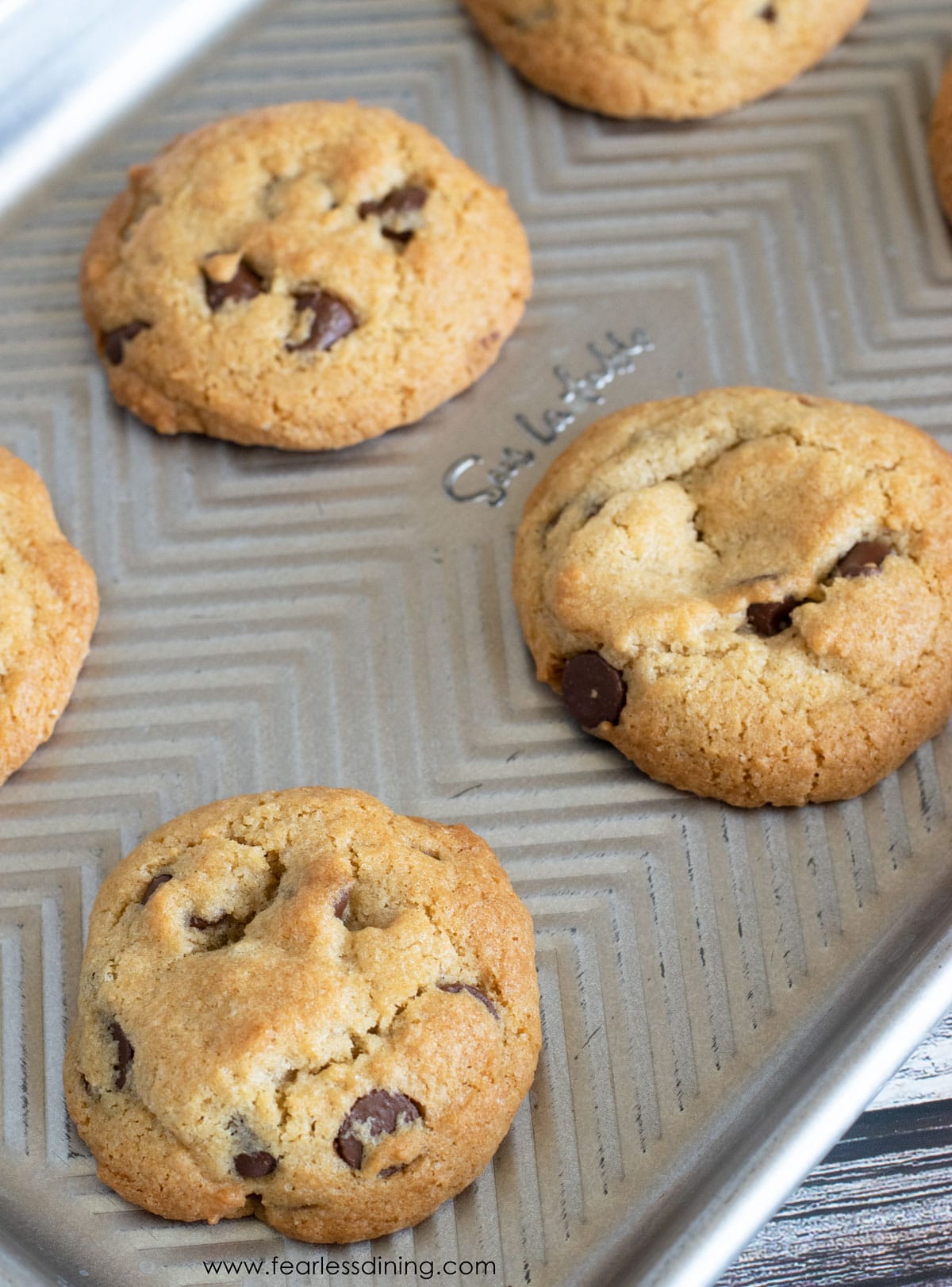
Email This Recipe To Me!
Best Gluten Free Flour For Cookies:
One thing I love about making gluten free cookies is you do not need to use one of the expensive flour blends to make cookies. The secret to using a less expensive flour blend is to let the batter sit so the grittiness of the ground rice flour softens.
- King Arthur Measure For Measure – One of my favorites for cookies, it is also economical. You can find it at most local grocery stores. Try it in this Gluten Free Butter Cookies recipe.
- Bob’s Red Mill 1:1 – I find this flour blend nice but grittier than King Arthur. It is also economical and sold at most grocery stores. Let a batter made with this blend sit for 20-30 minutes, and you will love the results.
- Namaste – I am starting to use Namaste brand more in my recipes. It is one of the only organic flour blends. I do find recipes need a little more moisture with this blend.
Reader Tested Blends
Over the years, readers often share which flour blends they use in my recipes. The following are gluten free flour blends they use in my cookie recipes:
- Target Good and Gather
- Cup4Cup
- Better Batter
- Robin Hood (reader note that this blend usually needs 1/16 more flour)
- Divided Sunset
- Arden Mills
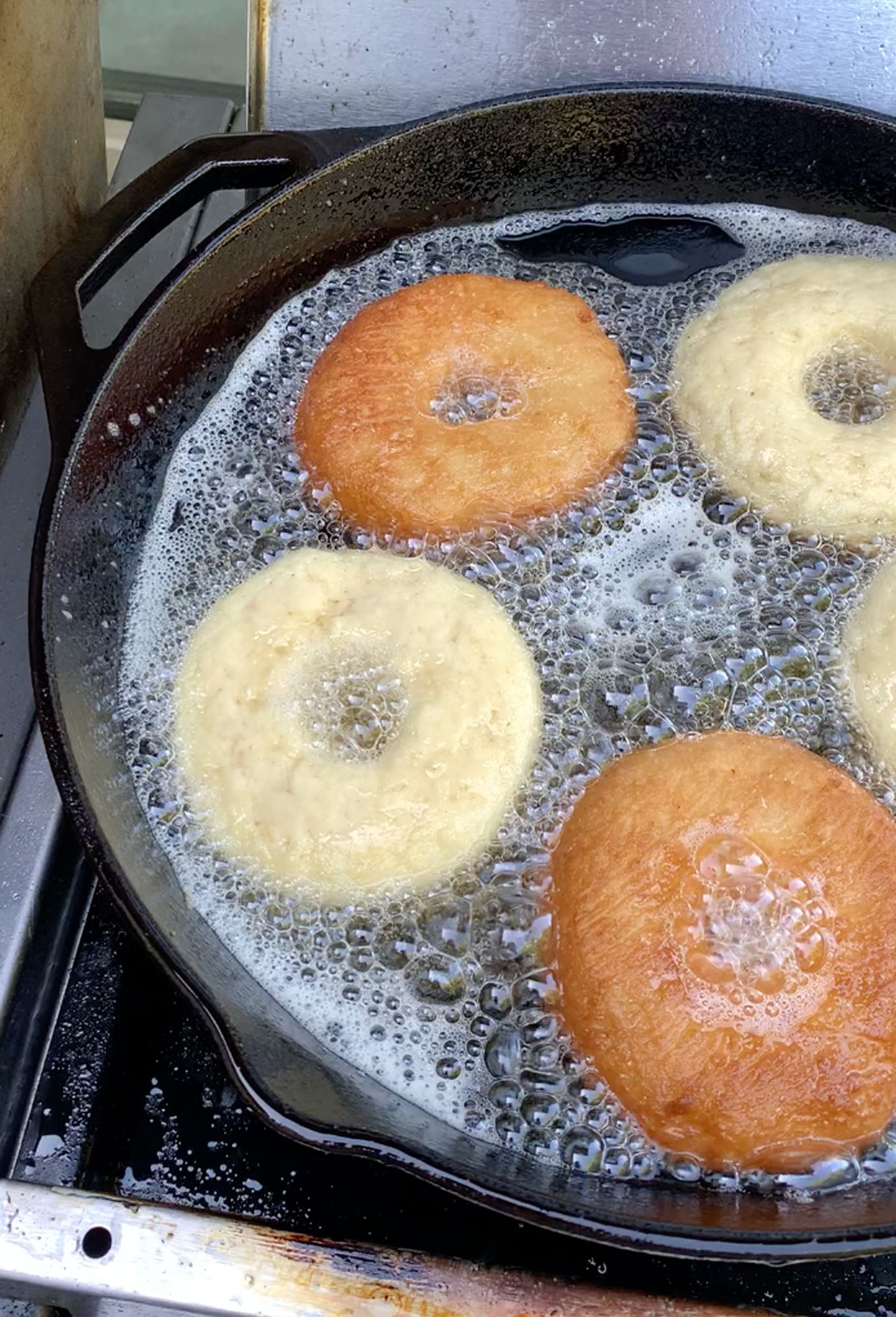
Best Gluten Free Flour For Frying:
Almost any gluten free flour will work well for frying. One of my favorites is Bob’s Red Mill All Purpose Flour in the Red Bag. It contains some bean flour, and this really lends itself to savory recipes. Try it with this Gluten Free Chicken Fried Steak recipe.
You can also use starches like tapioca starch for frying, like in my popular Gluten Free Fried Chicken recipe.
If you are making a sweet treat fried in oil, I like to use Cup4Cup flour blend in my Gluten Free Fried Donuts recipe. I tested King Arthur Measure For Measure, and Bob’s 1:1 in this Gluten Free Funnel Cakes recipe since funnel cakes don’t require yeast.
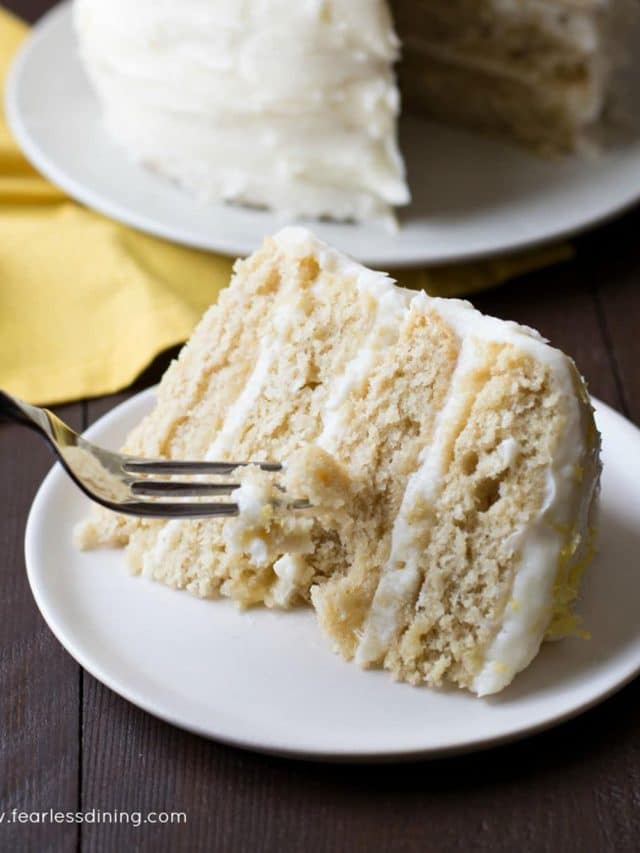
The Best Gluten Free Flour For Cake:
You do not need an expensive flour blend to make cakes, cupcakes, loaf cakes, or quick bread. As I mentioned above, with cookies, you can use a less expensive gluten free flour blend to make these items.
👀 Sandi Says: When using gluten free flour, let the batter sit for 20-30 minutes so the rice flour can soften.
- King Arthur Measure For Measure – I used this flour with some almond flour to make the Gluten Free Lemon Cake pictured above. I also love this flour for my Gluten Free Vanilla Cake recipe, which is featured in this Gluten Free Wedding Cake recipe.
- Cup4Cup – This is a nice flour blend that works well for cakes. It is more expensive than the King Arthur Measure For Measure, so I don’t use it this often for cake.
- Authentic Foods Steve’s Cake Flour – I have only tested this new flour blend once in my Gluten Free Banana Cupcakes recipe, and it worked well. This blend is not cheap, but if you are concerned about grit or if you don’t like the less expensive brands, use this for cakes and muffins. I needed about 3 TBSP to 1/4 cup less of this flour than other blends.
- Pillsbury Gluten Free Flour – This flour was a big surprise. I have tested it in most of my Gluten Free Mug Cakes recipes, and it worked so well!
If you love to bake a cake, I have a great Gluten Free Cake Troubleshooting Guide to help you prevent any baking fails.
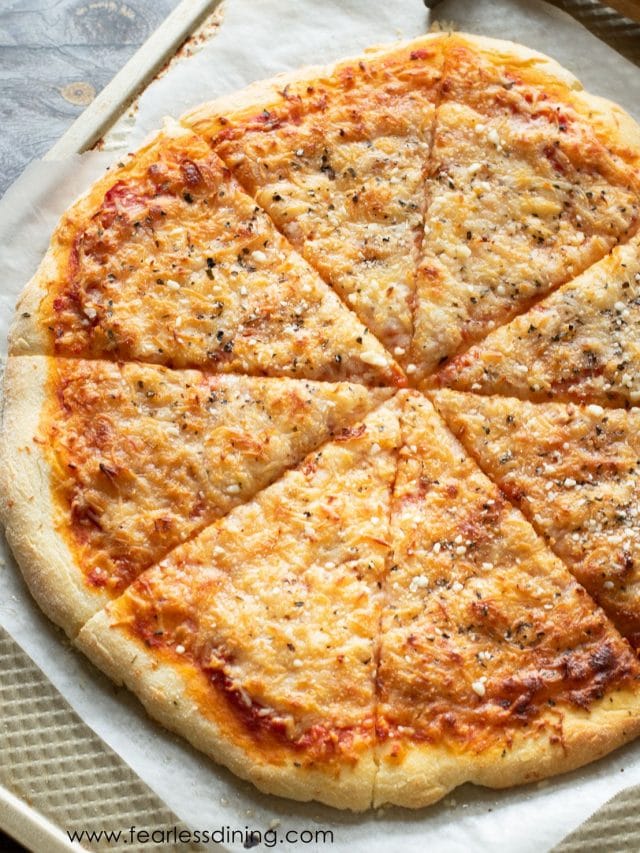
The Best Gluten Free Flour For Pizza:
You must use a gluten-free flour blend that works with yeast when making pizza. As mentioned in the bread section above, some blends state on their packaging that they do not work well with yeast. If you prefer to use a 1:1 blend, try my Gluten-Free Yeast-Free Pizza recipe. There is no yeast, so any blend will work.
- Cup4Cup – This blend is my favorite for making yeasted pizza dough. It is easy to use and works well with yeast. Try my Gluten Free Pizza Crust recipe, or make these Gluten Free Pizza Rolls!
- Pillsbury Gluten Free – This blend was a surprise for me. It worked well in my Gluten Free Deep Dish Pizza recipe.
- My DIY gluten free flour blend recipe works well for pizza crust.
If you are making pizza, try this simple homemade Gluten Free Pizza Sauce recipe.
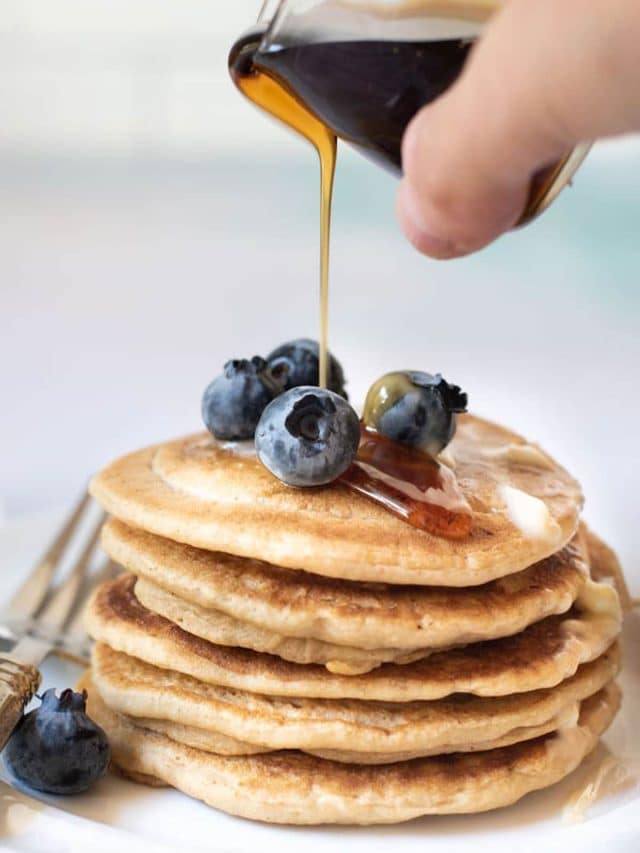
The Best Gluten Free Flour For Pancakes:
If you love fluffy pancakes, these are my favorite flour blends:
- King Arthur Measure For Measure is my go-to for pancakes. Let the pancake batter sit for 15-20 minutes, as I often recommend. This will help make them softer, and it eliminates any potential grittiness. Try it in my fluffy Gluten Free Pancakes recipe
- Bob’s Red Mill 1:1
- Pillsbury GF
- Namaste Flour Blend
This 12-inch cast iron skillet is great for making pancakes!
The Best Gluten Free Flour For Pie Crust:
The Cup4Cup with dried milk is my #1 choice for pie crusts because it helps make pie crusts extra flaky and delicious. It is easy to work with. Try it in my popular Gluten Free Pie Crust recipe.
If you are dairy-free, King Arthur Measure For Measure, Bob’s Red Mill 1:1, and Jules GF are good flour blends for making gluten free pie crusts. If you use Bob’s or King Arthur, let the dough sit in the refrigerator for 15-20 minutes.
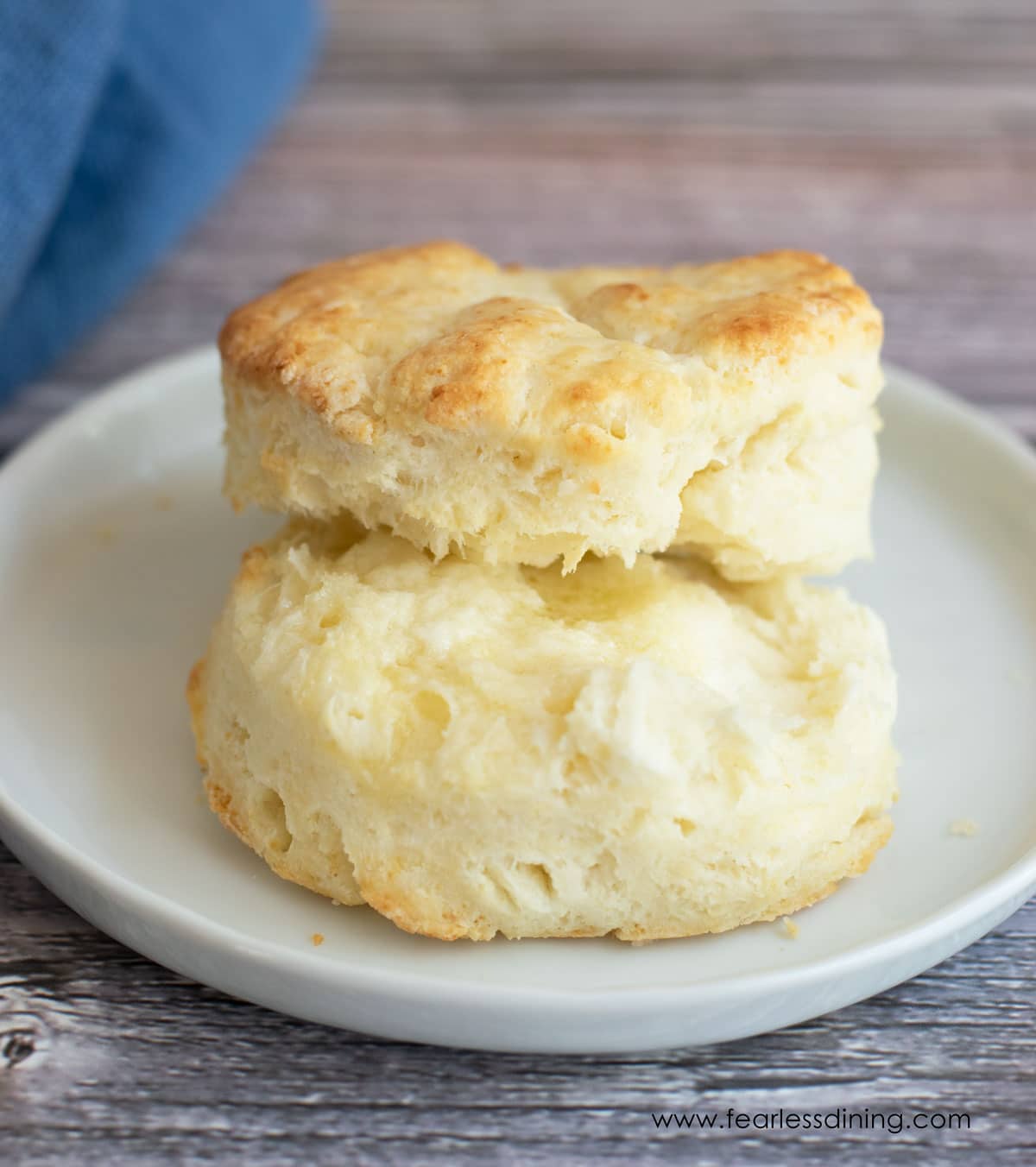
The Best Flour For Biscuits
My traditional Gluten Free Biscuits recipe gets rave reviews. I tested ten different gluten-free flour blends to see which blends worked well for biscuits.
Cup4Cup was my favorite as it rose the highest. Better Batter, King Arthur Measure for Measure, Bob’s Red Mill 1:1, Pillsbury, and others worked well. If you use Gluten Free Bisquick, read my tips to make Gluten Free Bisquick Biscuits to avoid them from tasting gritty.
I also have a lot of fun flavored gluten free biscuit recipes like brown sugar cinnamon and cornmeal.
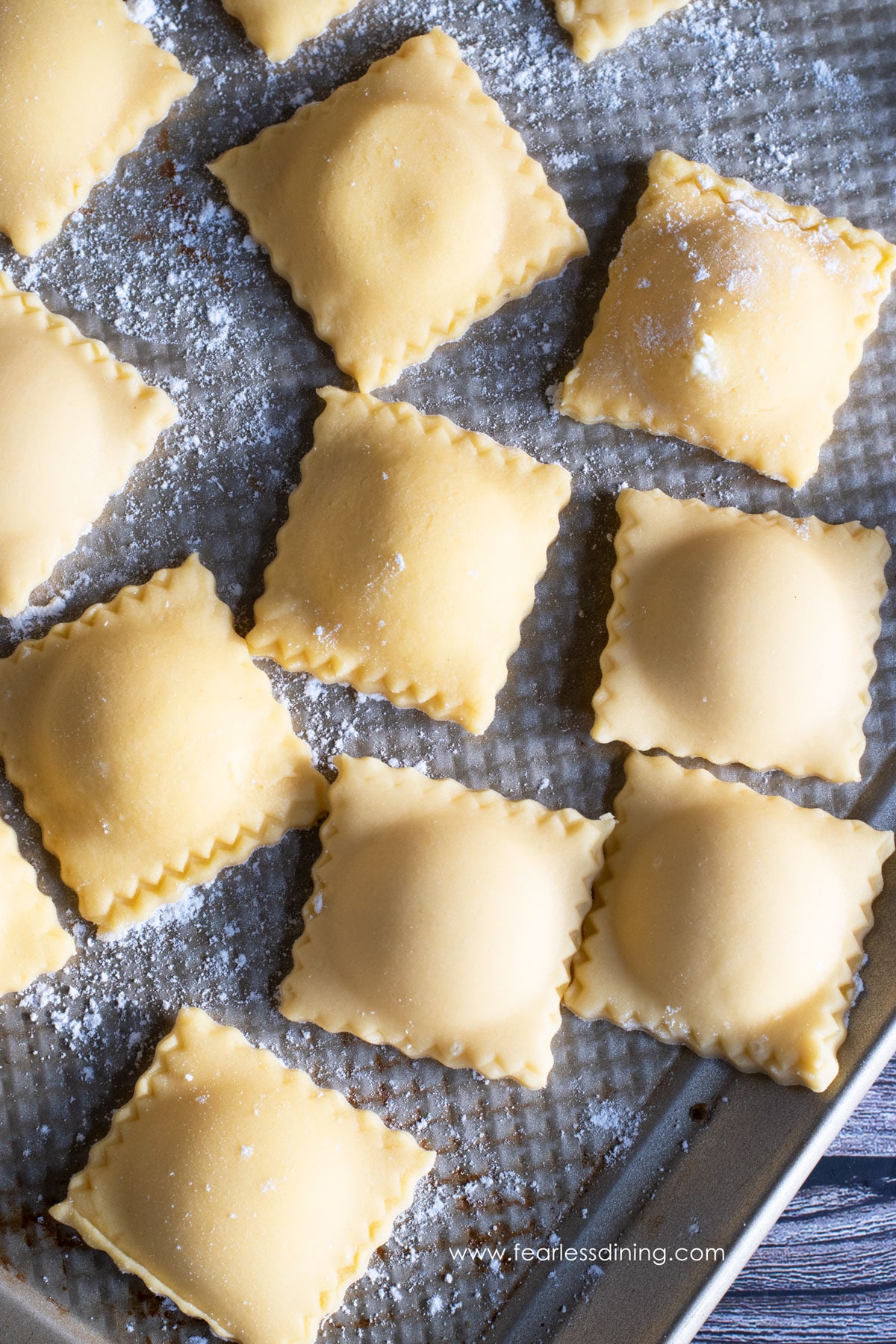
Best Flour For Pasta
I have only tested Cup4Cup gluten free flour to make homemade gluten free pasta. It worked well running through my standing mixer’s gluten-free pasta attachment. If you want to try making pasta from scratch, you will love this Gluten Free Ravioli recipe.
Have a tip?
We would love to hear if you have a favorite flour blend and share what recipes you love using it in! Please leave a comment. Thank you!


I’ve used Pillsbury for cookies, muffins, waffles & pie crusts. So far my favorite flour blend.
I have only found this blend at Walmart, but I agree it is a nice blend.
What are the best gluten free flours to use with yeast? I want to make cinnamon raisin buns and know some gluten flours are not good with yeast.
Hi Sally, I listed the flour blends I have used that work with yeast in this article. Maybe you missed that part, it is a long article. If you go to the table of contents, directly under the first photo, click on best flour for yeasted recipes. I hope this helps.
If you’re baking a recipe that originally calls for AP flour and you want to replace with GF flour do you replace by weight or volume?
Hi Heather, that is a great question. It has a complicated answer because it really depends on the blend and the grain-to-starch ratio of the blend. I have yet to find a 1:1 blend that can be substituted equally. You will probably have to tweak the amount of flour you use.
Thank you so much for this help!! Pinned!
You are very welcome, Julie. Thank you!
Bob’s Red Mill 1:1 DOES NOT say on the bag that it does not work well with yeast. I have several bags and it is no where on any bag. I have used Bobs for many recipes and all have turned out wonderfully.
It used to say it on the bag, but here…look at their website. It says this specifically. https://www.bobsredmill.com/gluten-free-1-to-1-baking-flour.html
I am also in Canada and most of the flours you use are not available here. Have you tried making the America’s Test Kitchen blend? I make it with Authentic brown and white rice flours, which I have to buy online. It is not gritty, and ATK baking recipes all call for the 30 minute rest to remove the grittiness. Your blog looks amazing! I will definitely try your recipes!!! Thanks for all your experimentation.
Hi Robin, my DIY Gluten Free Flour Blend recipe is similar to ATK and performs well in my recipes. If you use their flour blend, it should do well in mine. Just remember every gluten free blend has a different starch-to-grain ratio, so you may need to tweak moisture levels.
This is a fabulous blog. We have a few different flours available in Canada, including President’s Choice flour blend, Robin Hood flour blend, and Kinnickinnick. I’m like you — I use different flours for different things. Kinnickinnick is best for gravy, for example. Blends smoothly, unlike every other kind. Robin Hood is my least favourite — I find it gritty. I also love Cup4Cup and I’m delighted to know that I can use it for yeast breads — I actually stopped making them because I was always so unhappy with the results. This blog is excellent — thanks so much!
Thank you so much for your kind words. I haven’t seen any of the flour blends you have there, but if you notice grit, it probably has a lot of rice flour. Letting the batter sit for 20 minutes can help soften the grit. Cup4Cup works in yeast recipes that I have tried, it is funny their website says it doesn’t.
Hi! Thank you so much for all of your recipes, tips, and general info…..so helpful!!
My son’s favorite food before being diagnosed with Celiac was pierogies. What flour do you recommend for making the dough for pierogies. I want to try to make some for him.
Thank you!!
I am so glad you are enjoying the information. It is so hard when people are first diagnosed. As for flour blends, I find Cup4Cup a great blend, if you can have dairy. Otherwise, I would recommend King Arthur Measure for Measure.
There is a lady in our town in Biggar Saskatchewan who makes beautiful gluten free perogies. She uses President’s Choice gluten free flour, but the secret is, she saves her potato water and uses that to make the dough. She says it works beautifully — and we love her results. They don’t fall apart, they hold up wonderfully in boiling.
Wow, I haven’t heard of that, but it sounds like a great idea.
I couldn’t find any amount measurements anywhere
I am not sure I understand. This talks about store-bought flour blends. If you are looking for a recipe to make a gluten free flour blend, use this: https://www.fearlessdining.com/easy-gluten-free-all-purpose-flour-blend/
Doing a search for a gluten free recipe I stumbled on your website. Wow! I’ve been GF for a little over a year and have am reaching the place where I feel confident bake my own GF items. You have provided so much valuable info in one place. Thank You! I live at altitude ~ 8,000ft, it is very arid here as well. Do you have added recommendations for my baking conditions? 😊
Hi Carrie, I have only baked at a high altitude once, when vacationing in Tahoe. I noticed yeast went crazy…but I only had a day so I wasn’t able to do much testing.
What is the best gf bread flour for bread machines ?
Hi Janet. I have a good blend I use for my gluten free bread machine recipe, and I am testing my new gum-free DIY flour blend in my bread machine recipe later in the week. https://www.fearlessdining.com/gluten-free-bread-machine-bread/
Hi Sandi,
Love your receiving your emails with the different recipes every week. I’ve tried several cookie recipes and especially love the Gingerbread Biscotti. This article on GF flours is truly educational. Do you ever try organic GF flours? Would love your advice, if you have. I try to be as organic as possible. Thanks!
Hi Karen, I haven’t seen any organic flours. Which brands are you seeing, and I can see if I can find them to test.
Hi there Sandi,
Thank you for your great recipes and articles! I really appreciate your gluten free flour breakdown. I learned a lot from that article and will use it as a guide for baking. What about gf flours for bread making machines?
Any recommendations/ comments?
Thanks.
Lisa
Hi Lisa, I am glad the information helped. I do use a combination of gluten free flour types for my bread machine. Here is that recipe. https://www.fearlessdining.com/gluten-free-bread-machine-bread/
Sandi, I consider your blog the quintessential MASTER CLASS in gluten free baking. No lie. No lip service. No exaggeration. Between you and Nicole Hunn (Gluten Free on a Shoestring), the baking tips and recipes are invaluable!
I discovered my sensitivity to gluten about six years ago. Believe me, cooking and baking gluten free has an exceptionally long learning curve. LOL!
So far, I am confident in baking cookies, cakes, cupcakes, and muffins. Bread remains the Achilles Heel of my existence!! I’ve had zero success. Sadly, I’ve thrown every loaf in the “round file”, commonly known as the trash bin. It’s pretty frustrating, to say the least, since I feel I’m tossing money in the garbage can. I’m going to take your suggestion and give “Steve’s” bread flour a whirl. Wish me luck.
Thank you for everything you provide here and all your (gluten free) expertise. You rock!
Melanie, you made my year. Thank you so much for your kind words. I am so glad my tips are helping you and others. I love Steve’s Bread Flour; it is incredible. Just note I have found it will not work as well in a bread machine.
Hi, would love to download for someone who doesn’t have a computer. Could you send me this report please?
Sorry, this is a website article. There isn’t a download function. Maybe show it to them on your phone, or they can look on their phone?
This is the most informative article I’ve seen regarding gf flours. Many thanks for sharing!
I have had great success with Gluten Free Mama’s Almond Blend Flour. It works especially well for scone recipes and as a 1-1 replacement in every cake and cookie recipe I’ve tried. It is a baking staple in my house.
Thank you so much, Donna. I am glad this information helps you. I haven’t heard of the flour blend you mentioned, but I am really glad it is helping you. I am sure readers who see your comment will be glad for this information too.